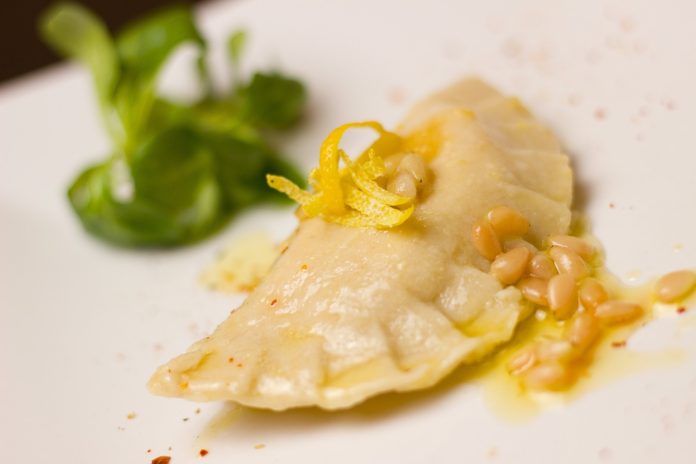Doughy, delicate, and delicious — if you’re anything like us, dumplings make up one of your key dietary food groups.
These compact little parcels of goodness can be eaten alone or provide the perfect accompaniment to soups, stews, and salads. But how well do you know your ravioli from your pierogi?
When you’re ready to get acquainted with some of the tastiest traditional dumplings around, we’ve got you covered.
Grab a knife and fork and let’s take a trip to learn about five delicious dumplings from all over the world.
Table of Contents
1. Ravioli, Italy
We’ll kick off our tour with a fan favorite — everybody loves ravioli. But did you know that the beloved pasta shape is actually considered to be a dumpling?
Yes, it’s true — though if we’re getting technical, the word we should be using is ‘raviolo’. Allow the experts from Pasta Evangelists to explain: “Both ravioli and raviolo describe the same pasta parcel.
The simple difference is that ravioli represents the plural of the singular raviolo.”
Whatever you call them, they sound good to us. Roman ravioli is prepared as a pasta pocket stuffed with ricotta cheese, meat, or fish.
According to The Foreign Fork, ravioli has been made for centuries — having first been documented back in the 14th century in the personal letters of famed merchant Francesco Datini.
2. Pierogi, Poland
You might not have heard of Polish pierogi, but that’s all about to change. These iconic parcels are made by wrapping thin potato dough around a tasty filling.
Some say they originally came from China, having been delivered via the Silk Road by the ever-pioneering Marco Polo.
Regardless of their origins, they have a quintessentially Eastern European flavour profile — packed with potato, minced meat, or even sauerkraut.
If you’re unfamiliar with the latter ingredient, here’s a crash course. Sauerkraut, or ‘sour cabbage’, is a style of fermented cabbage that boasts major health benefits, according to Healthline.
This satisfying side is packed with probiotics for improved digestion and has even been touted to help with weight loss thanks to its high fibre content. Who said dumplings couldn’t be healthy?
3. Kubba, Iraq
While some dumplings can be enjoyed by themselves, others work best in soup. Iraqi kubba soup is easily one of the tastiest, a tangy mix of fresh vegetables and kubba dumplings made from cracked wheat and spiced meat.
The dumplings are traditionally made into ball shapes or flattened like Kurdish kubbah, a close relative of the Levant delicacy.
As for the soup itself, veggies like carrots, courgettes, peppers and aubergines are chopped up, softened, and mixed with tomato paste and citric acid for depth of flavour.
Add a little seasoning and simmer away, then enjoy your bright, tomatoey soup with the bobbing kubba balls.
Warming, filling, and on each of our attempts, absolutely delicious.
4. Jiaozi, China
The most common of China’s many, many dumplings is jiaozi — or if you’ve ever stepped foot inside a pan-Asian restaurant chain, you might know them as gyoza.
Jiaozi has a distinctive texture because the dough is rolled very thin before being steamed or boiled, leaving behind a sticky outer layer.
The dumplings are traditionally stuffed with ground pork or other meats, veg, or seafood.
Jiaozi is eaten year-round in China but is especially popular during Chinese new year. According to Asian Inspirations, this is because the word ‘jiaozi’ sounds similar to a Chinese expression that means ‘bidding farewell to the old and ushering in the new’.
They are often enjoyed with a dipping sauce comprising rice wine vinegar, soy sauce, sesame oil and chilli powder — and if you’re feeling creative, you can prepare your own using this recipe.
5. Palt, Sweden
Boiled potato dumplings might not be your first pick off of the menu, but once spiced and stuffed with onions and pork, this Swedish dish is quite the treat. Palt has many regional variations, but perhaps the most fascinating is blodpalt, hailing from the Northern territories of Sweden and Finland.
The local recipe here calls for reindeer blood to be added to the flour — festive, but not for the faint of heart.
Palt is commonly served with butter and lingonberry jam. While not as popular globally as alternatives like strawberry or raspberry, this sweet preserve is a staple of Northern and central European cuisine.
In Sweden, it’s usually enjoyed with köttbullar (meatballs) and other traditional dishes such as raggmunk. Alongside palt, it’s a delicate and moreish garnish that contrasts wonderfully with the savoury dumpling.














